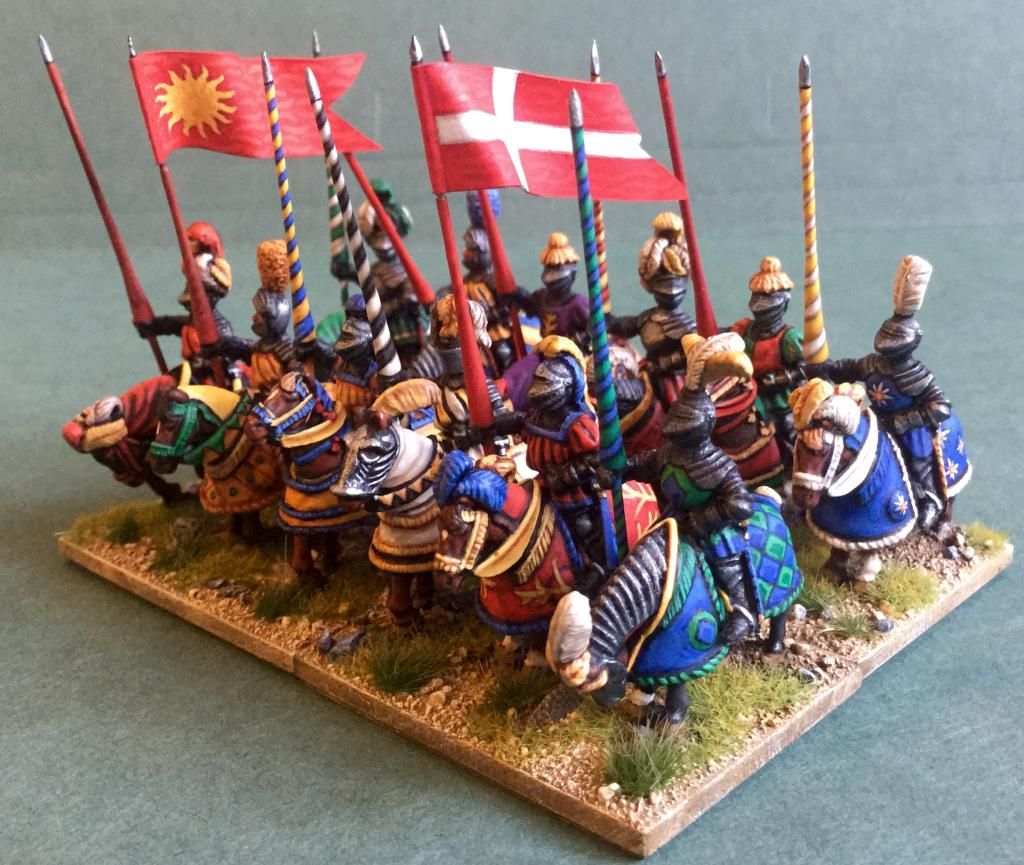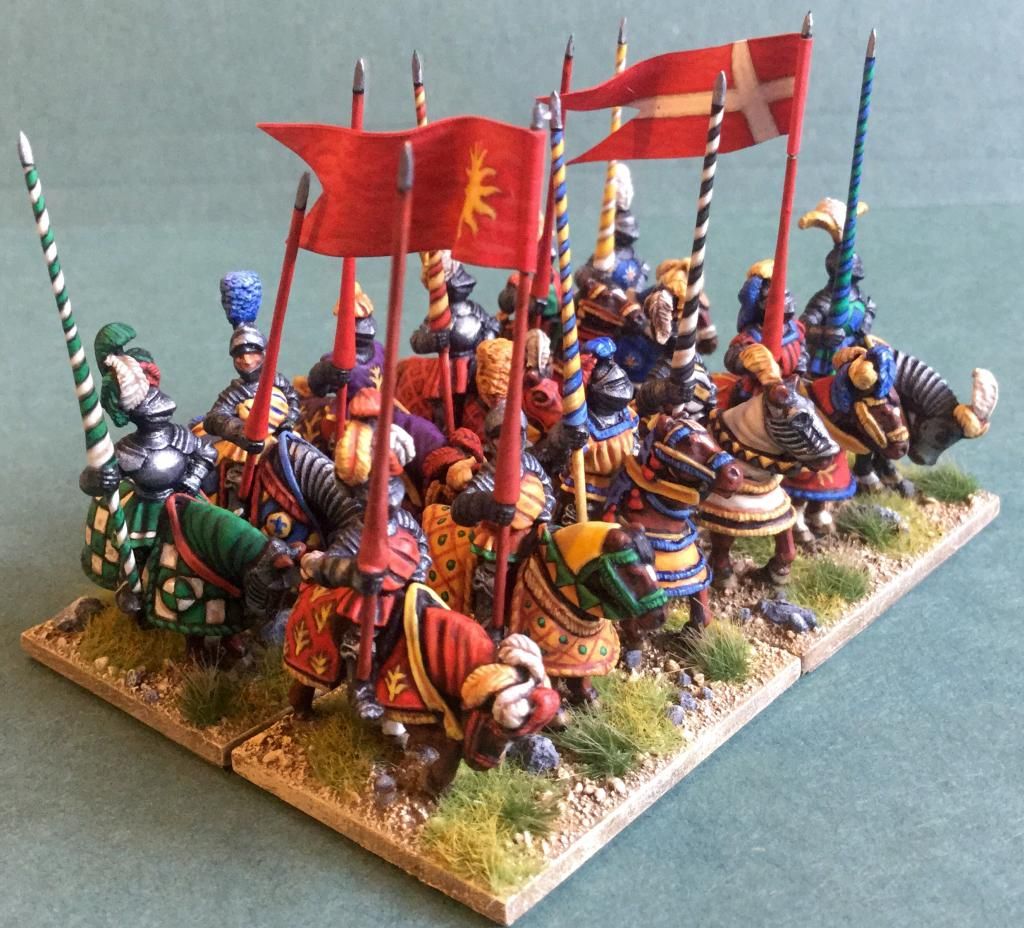I originally posted an explanation of my lance-making process on the
Slithering FOG-R board last year - I'm playing catch up with this blog to get to the current state of my painting progress.
It sounds a long process but each step is quick and, if you do a few together, it doesn't take long at all.
I use 0.8 mm brass wire. After shaping the point and cutting them to length, I mix up some Milliput and roll some into a long, thin (about 1mm dia) sausage. I cut a piece (about 30 mm long, IIRC) and wrap it around the lance in a spiral, starting with the spirals close together at the hand-end and widening the helix towards the point. I then roll the lance ona smooth cutting mat. Surprisingly this spreads the Milliput around the wire core very evenly, keeping the wire central. Then I set them aside to cure. Before the Milliput is absolutely hard, I cut the step for the hand with a sharp knife - doing it then avoids the risk if chipping or fracture.
Here is a photo of the lance making process:

For sanding the lance to final shape, I hold the lance in a pin vise. Rough shaping is with a file to give a uniform cone then with folded-over sand paper wrapped around a dowel to give the flared profile (the nose of the vise helps with this) and smooth surface.
The extra-long ones are for Essex figures, to compensate for needing an extra few mm below the hand. Although it makes the proportions wrong, I prefer to have the extra stability of having the lance glued to the figure at two points.
I painted about half the lances with the 'barber's pole' spiral pattern. Tis was also done in a pin vise, free hand, painting a bit then rotating 45 degrees or so and painting a bit more. You can actually do multiple steps, equally spaced for each rotation. If you look close enough, the spirals aren't that neat: I use a three shade method so the boundary from one colour to the other is softened, averages out and looks smooth. It takes a bit of practice but the method is quite easy. One thing to look out for is that to keep the spiral thickness about the same, the helix needs to change as the diameter reduces. The sad thing is that I suspect the barber's pole lances were not used in battle but they look pretty.











